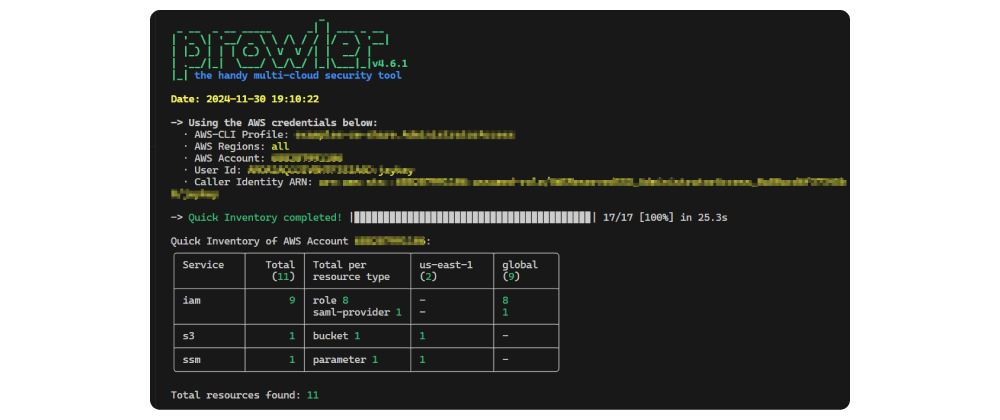Use case
You want to run prowler scans for different AWS accounts, which AWS SSO manages.
Approach
To scan multiple AWS accounts with prowler is described here: https://docs.prowler.com/projects/prowler-open-source/en/latest/tutorials/aws/multiaccount/ Therefore, it’s necessary to have permission to assume a role in every account. This post describes how to do it with AWS SSO.
Setup
With a dockerfile, all needed tools are prepared in advance to run the scans.
Docker
The Dockerfile mainly uses the Prowler image and adds aws-sso-util.
FROM public.ecr.aws/docker/library/alpine:3.20.3 AS builder
RUN apk update && apk add --no-cache bash
FROM public.ecr.aws/prowler-cloud/prowler:4.6.1
COPY --from=builder /bin/bash /bin/bash
RUN pip install pipx && \
pipx install aws-sso-util
# pipx ensurepath
WORKDIR /workspace
ENTRYPOINT ["/bin/bash"]The prowler docu for installing with docker is here: https://docs.prowler.com/projects/prowler-open-source/en/latest/#__tabbed_2_3
After creating the image with docker build -t prowler.. The container can be created with the following command.
docker run --entrypoint /bin/bash -it \
--mount type=bind,source="${PWD}/scripts",target=/workspace/scripts \
--mount type=bind,source="${PWD}/.env",target=/workspace/.env \
--mount type=bind,source="${PWD}/output",target=/workspace/output \
--name prowler \
prowlerThese are the commands to use the container again docker start -a prowler and docker exec -it prowler /bin/bash.
Initial configuration after container creation
The command for running the container mounted the folder scripts and .env file to the container.
One of the scripts is ./scripts/create-aws-config.sh which creates the file ~/.aws/config, with the SSO session values.
#!/bin/bash
if [ ! -f .env ] ; then
echo "ERROR: .env file not found!"
exit 1
else
source .env
fi
if [ -z "$SSO_START_URL" ] ; then
echo "ERROR: SSO_START_URL not set in .env file!"
exit 1
fi
if [ -z "$SSO_SESSION_NAME" ] ; then
echo "ERROR: SSO_SESSION_NAME not set in .env file!"
exit 1
fi
if [ -z "$SSO_REGION" ] ; then
echo "ERROR: REGION not set in .env file!"
exit 1
fi
aws-sso-util configure populate \
--sso-start-url $SSO_START_URL \
--sso-region $SSO_REGION \
--region $SSO_REGIONThe script needs the following env variables as file .env.
export SSO_START_URL= # https://<your-aws-account-id>.awsapps.com/start
export SSO_SESSION_NAME= # <your session name, it's just a name>
export SSO_REGION= # <your region, e.g. us-east-1>If you run the script ./scripts/create-aws-config.sh inside the container, the tool aws-sso-util will ask for the SSO credentials.
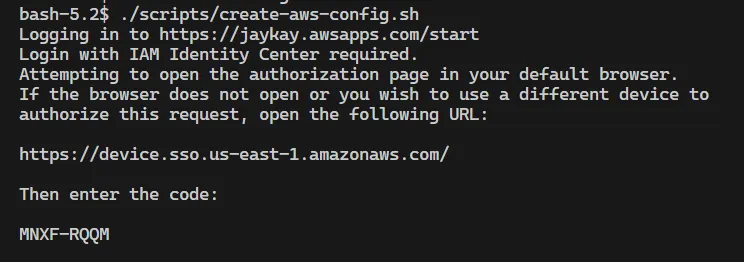
Open the link in the browser and put in the code.
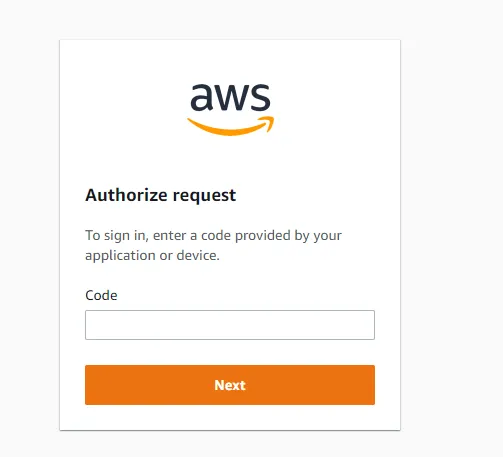
Then, allow the access.

After confirmation, the config file is created.
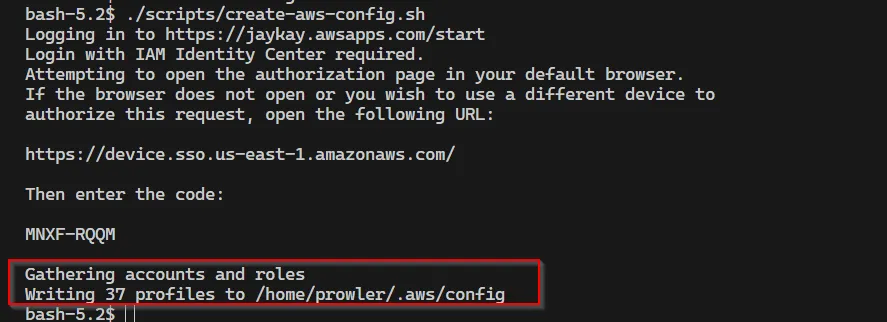
Prowler scans
The second script is ./scripts/run-prowler.sh which runs the prowler scan for all accounts.
#!/bin/bash
if [ ! -f .env ] ; then
echo "ERROR: .env file not found!"
exit 1
else
source .env
fi
if [ -z "$SSO_START_URL" ] ; then
echo "ERROR: SSO_START_URL not set in .env file!"
exit 1
fi
if [ -z "$SSO_SESSION_NAME" ] ; then
echo "ERROR: SSO_SESSION_NAME not set in .env file!"
exit 1
fi
if [ -z "$SSO_REGION" ] ; then
echo "ERROR: REGION not set in .env file!"
exit 1
fi
ROLE_NAME_REGEX="^AdministratorAccess"
PROWLER_COMAND="prowler aws -i"
ACCOUNTS=$(aws-sso-util roles --no-header --separator , --role-name $ROLE_NAME_REGEX --sso-start-url $SSO_START_URL --sso-region $SSO_REGION)
while IFS=',' read -r PROFILE ACCOUNT ROLE; do
PROFILE=${PROFILE// /-} # Replace spaces with hyphens in PROFILE, like aws-sso-util does
CONFIG_PROFILE=$PROFILE.$ROLE
echo "Profile: $PROFILE, Account: $ACCOUNT, Role: $ROLE, Config-Profile: $CONFIG_PROFILE"
$PROWLER_COMAND --profile $CONFIG_PROFILE
done <<< "$ACCOUNTS"The value of the variable ROLE_NAME_REGEX is a regex filter of the role name, which is connected to the AWS SSO.
In this case, only the role name AdministratorAccess is used.
Some Accounts are connected with multiple roles.
In this example, all Accounts have the role AdministratorAccess, so this filter works to scan all listed accounts.
In another scenario, the script must be adapted to filter the right role.
The variable PROWLER_COMAND is the command to run the prowler scan.
The script ./scripts/run-prowler.sh call will look like this for every account.
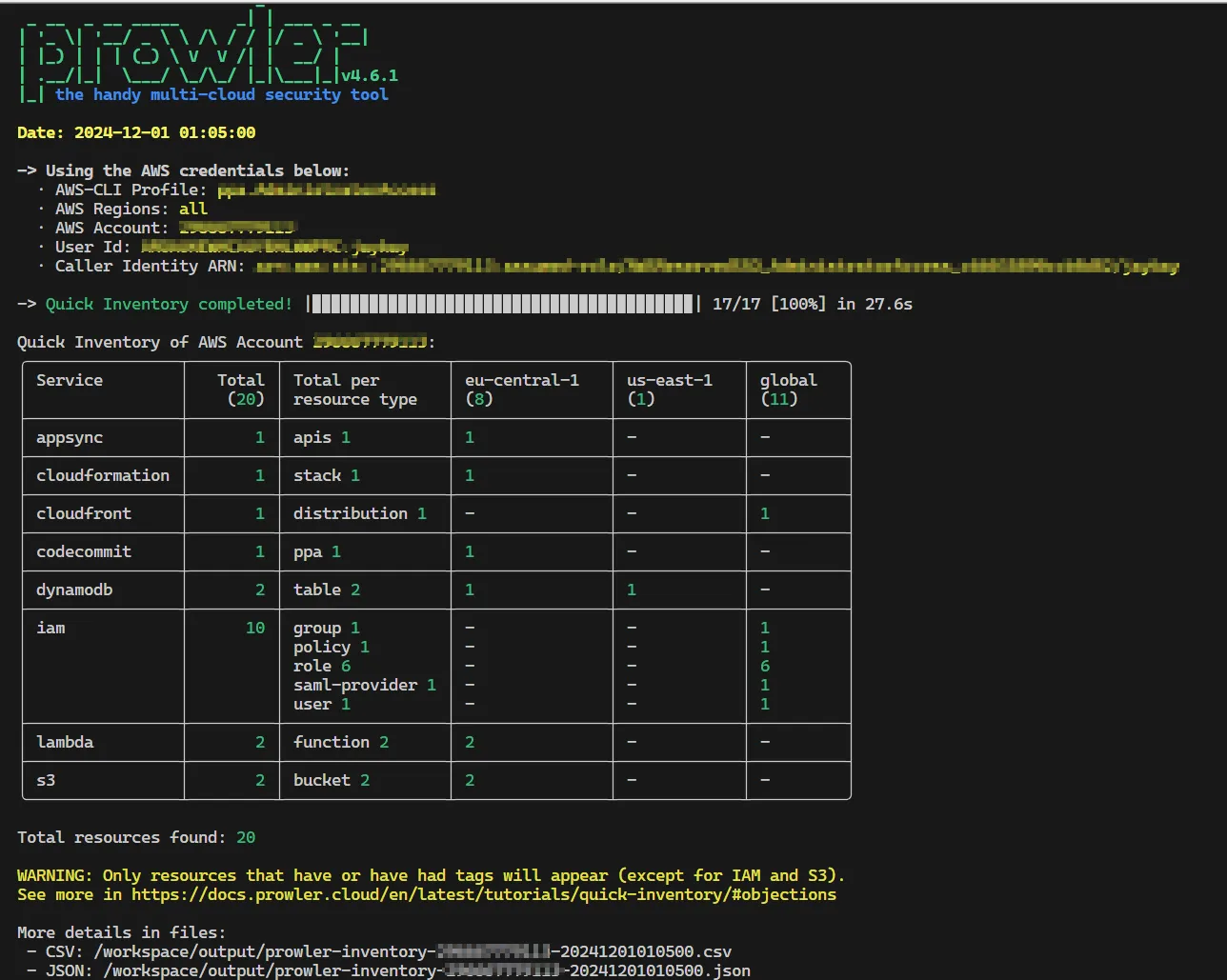
If the login is expired, the script will ask for the credentials again.
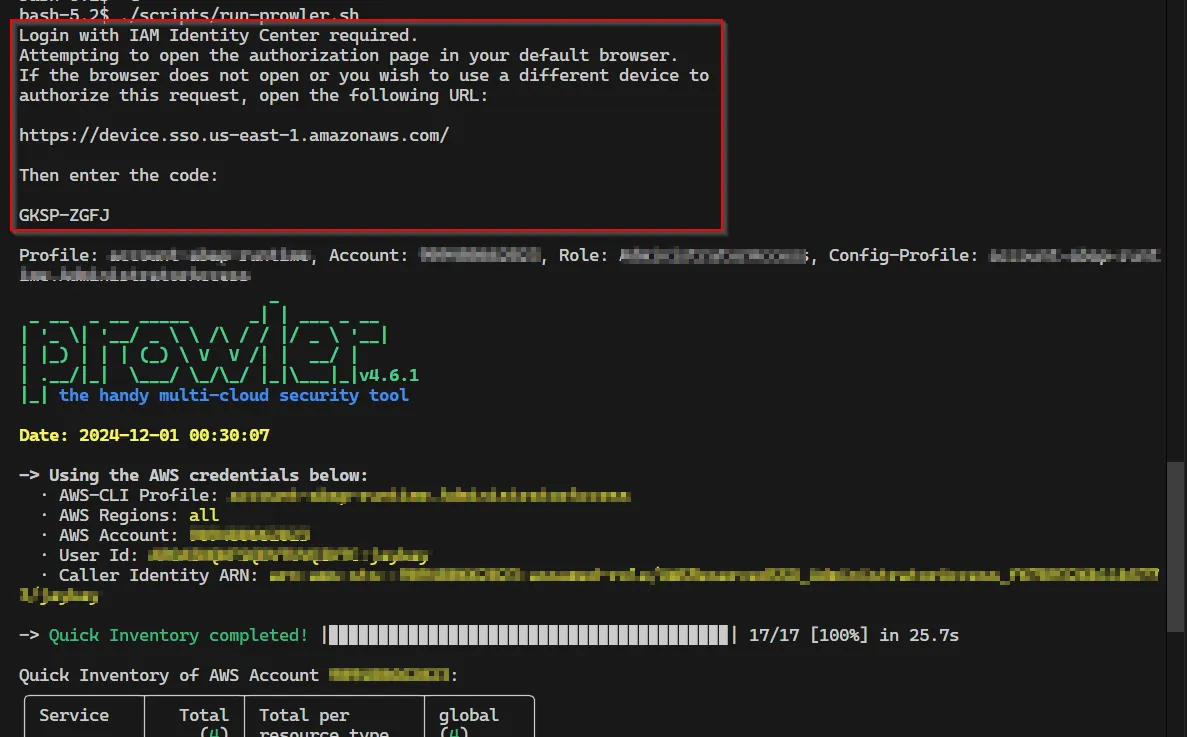
The scan result is additionally saved in the folder output, which is mounted to the container.
With this configuration, a JSON and a CSV file are created for every account.
This example used the Prowler quick inventory scan. Here are more examples for different scans. E.g. for compliance scans.
That’s it. Now you can scan all your AWS accounts with Prowler and AWS SSO 🥳
